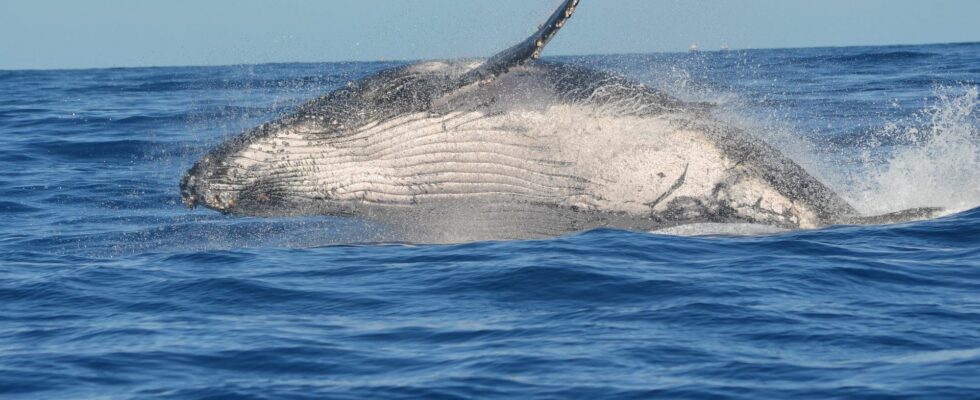A spike in mortality is affecting whales on the west coast of the United States. Much of it is associated with human impact… and in particular, the increased volumes of goods transported by ships.
On the coasts of the Atlantic a very sad phenomenon is taking place. Since around 2016, there has been a peak in mortality among humpback whales, found stranded on beaches. No less than 186 such deaths have been recorded by the US Oceanic and Atmospheric Observation Agency (NOAA). A New York Times investigation published on February 28, 2023 shows that 23 whales have been found dead between December 2022 and February 2023 alone — in just three months.
But, what is happening in the Atlantic for such a peak in whale mortality to occur? Several factors are put forward. Among them: humanity. ” Of the whales examined, around 40% showed signs of human interaction, from ship strikes to entanglements (with fishing nets, for example), says NOAA.
“When the whales are in these channels, you have to cross your fingers”
Humanity’s impact would take many forms. First, there are the insidious effects of climate change: warmer waters cause behavioral changes in biodiversity, displacing entire populations to less favorable environments. In this case, the whales would move more towards the coasts, to follow their prey. Which is linked to a second impact: some of the autopsied whales show signs of collision with a ship. And, these collisions seem to be increasing.
As the New York Times investigation shows, this is another human activity that is partially to blame: online shopping. A pandemic effect has already been documented. But this effect was already beginning to appear before the pandemic: faced with ever-higher order volumes, some ports are becoming more active; there are more ships, bigger. This is how the port of New York or even that of New Jersey saw their volumes of goods “skyrocket” in 2020-2021. A 27% increase since 2019.
This has also changed certain modalities in the movement of ships, highlights the NY Times. The boats now make round trips to the north, in addition to their usual route to the south, to avoid the stagnation of empty containers and thus speed up the movement of goods. This practice, which has been taking place for 6 months on the west coast of the Atlantic, has increased maritime traffic, which could explain the even more pronounced peak in mortality in recent months.
The result is quite clear to grasp: more maritime traffic means more danger for the whales – which, moreover, are more likely to circulate towards the coasts. “ When the whales are in these channels, you have to cross your fingers and hope that there will be no collision “Laments Paul Sieswerda, executive director of Gotham Whale, to the NY Times.
Among the solutions mentioned by the NOAA, we find the limitation of the speeds of ships, lowered to 10 knots, or even less, in order to reduce the risk of fatal collisions. The idea would be to apply stronger limits to smaller vessels, which are less regulated and cause a large proportion of fatal collisions. Similarly, NOAA suggests increasing the spatial limits of navigation. This regulatory proposal, which dates from July 2022, has not yet been adopted.
Discover our podcast “The 6th extinction”
To understand the threats to life in our time, Numerama offers The 6th extinction, a podcast carried by science popularizer Marie Treibert. To be found on all listening platforms. The first episode takes you on an incredible rescue of a species of bird, the Kakapo:
Do you want to know everything about the mobility of tomorrow, from electric cars to pedelecs? Subscribe now to our Watt Else newsletter!
